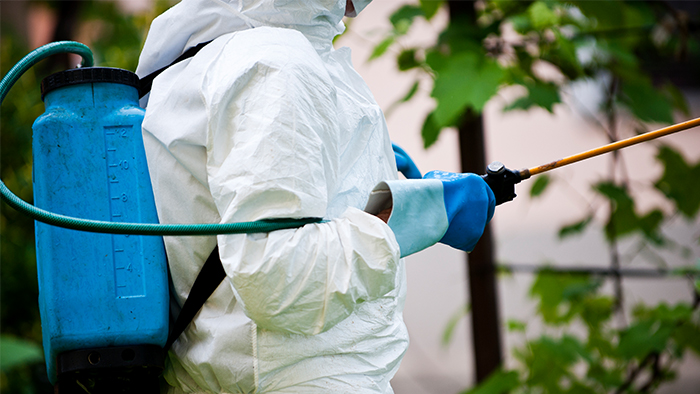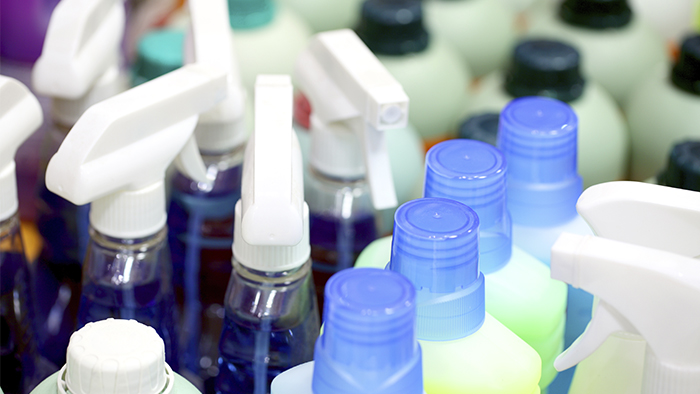Product Compliance and Toxins Regulations
Some retail products are regulated by the EPA or other agencies based on potential impacts of the products on the environment or public health. Regulations may include restrictions on certain chemicals in products or packaging, product labeling or disclosure requirements, regulation of product emissions, performance standards, product registration or certification requirements, product take-back, or other requirements. Product regulations encompass a broad set of laws and legal requirements, and can include federal, state, and local requirements. This summary does not cover Consumer Product Safety Commission requirements, which also regulates certain aspects of product safety and chemicals in products.
COMPLIANCE CONSIDERATIONS
Several major relevant product areas and associated regulations are listed below. Note, however, that this summary is not exhaustive.
Many retailers depend on their suppliers (manufacturers, importers, and/or wholesalers) to provide products that comply with product laws. However, under some laws, the retailer may be subject to enforcement for selling non-compliant products even if the supplier indicated that the product was compliant. Given the potential risk to retailers, it is critically important for a retailer to understand the applicable regulations and use reliable suppliers. Contract language putting the compliance burden on your vendors may give you basis for an action against them should they provide non-compliant products. However, depending on the location and situation of the supplier, these provisions may be difficult to enforce, and the existence of an indemnity generally does not relieve the retailer from its responsibility to respond to an agency enforcement action.
Pesticides

The EPA regulates pesticides, including registration, labeling, and other management requirements, under the Federal Insecticide, Fungicide and Rodenticide Act (FIFRA) and its implementing regulations at 40 CFR 152 to 180. There are also state and local pesticides requirements (including separate state registration requirements and a special mill assessment in states such as California on the first sale of a pesticide into or within the state). The National Pesticide Information Center provides a list of relevant local and state agencies. Private label products and retailer-created descriptions and advertising copy all create specific and complex compliance obligations for retailers under FIFRA and parallel state programs.
Any product that claims to control, repel, or mitigate any pest (including but not limited to bacteria, mold, mildew, algae, etc.) is considered a pesticide and is regulated under FIFRA. This means that in addition to pesticides such as bug killers and rat poison, some household products such as bleach, sanitizers, disinfectants, products that claim to kill germs on surfaces other than the human body, and insect repellants are also pesticides. Devices designed to kill or repel pests such as fly traps, high frequency sound generators, and mole thumpers are also regulated under FIFRA (the requirements differ from requirements applicable to pesticides generally), but human powered devices such as fly swatters are not covered. Product claims made in retailers' advertising copy can also bring products they sell within the scope of FIFRA, even if the product manufacturer did not intend the product to be used as a pesticide.
A few pesticides such as garlic oil, lauryl sulfate, and corn gluten meal are considered "minimum risk" and are exempt from federal regulations. The EPA maintains a list of ingredients in this category. However, these pesticides may still be regulated at the state level.
As a retailer, you should be sure that:
- Any pesticides that you offer for sale are registered with the EPA (and registered in each state where they will be sold or distributed). The National Pesticide Information Retrieval System (NPIRS) maintains a list of federally registered products.
- Pesticides are labeled with an EPA approved label.
- Restricted use pesticides, which may only be used by licensed and certified pesticide applicators, are not sold to consumers
- Making advertising or promotional statements about pesticide uses of a non-registered product or recommendations on usage that differ from the label instructions is avoided.
Under federal law, recalled pesticides that have been suspended or canceled or unused pesticides that are part of a waste pesticide collection program maymay be managed as universal waste, which is a subset of hazardous waste (the RCC Hazardous Waste page has more detail). However, retailers should consult state laws to confirm that they also allow management of these recalled or unused pesticide products as universal wastes. If a pesticide is returned, retailers should pay special attention to determine whether it is appropriate for resale. If the product has been opened and used (i.e., some of the product is missing), or if the label is damaged or obscured, then the product is not appropriate for resale. Retailers should not attempt to attach new labels or repair pesticide containers unless they are registered with EPA as pesticide producing establishments and have an approved minor repair program under EPA’s Container Repair Interim Policy. See the Pesticide Container Repair Interim Policy for more details.
Federal Insecticide, Fungicide and Rodenticide Act Fact Sheet
View Fact SheetToxic Substances Control Act (TSCA)
Under TSCA, as amended in 2016 by the Frank R. Lautenberg Chemical Safety for the 21st Century Act, the EPA is required to address new and existing chemicals that pose unreasonable risks to human health or the environment. The EPA has the authority to implement regulatory restrictions on the manufacture (defined to include import), processing, distribution, commercial use, or disposal of the chemical to eliminate the unreasonable risk. The EPA’s risk management options include labeling, recordkeeping or notice requirements, actions to reduce human exposure or environmental release, and a ban of the chemical or of certain uses. TSCA does not apply to pesticides, tobacco and tobacco products, firearms, food, drugs, and cosmetics.
TSCA may apply to any company that manufactures (including imports), processes, distributes in commerce, uses commercially, or disposes of a chemical substance, including as part of mixtures and articles. An article is a manufactured item formed to a specific shape that has an end use function dependent upon its shape and that has no change in chemical composition during use. Examples of articles include televisions, phones, cigarette lighters, automobiles, clothing, carpet, sheets of plywood, and batteries. Of note, while companies that import or process chemical substances as parts of articles are exempt under certain TSCA requirements (e.g., TSCA Section 5 premanufacture notice (PMN) requirements and, generally, significant new use notification (SNUN) requirements), EPA increasingly has been covering these companies in actions under TSCA and regulating the manufacture (including import), processing, and distribution in commerce of chemical substances as part of articles in TSCA regulations.
Examples of TSCA regulations intended to address unreasonable risks posed by specific chemical substances include a ban on the import of textiles, carpet, furniture, electronics, and household appliances that contain certain per- and polyfluoroalkyl substances (PFAS) unless the EPA reviews and approves the use or puts in place restrictions to address any unreasonable risk; a prohibition on the manufacture (including import), processing, and distribution of methylene chloride in all paint removers for consumer use; and final rules for five persistent, bioaccumulative, and toxic (PBT) chemicals. The PBT chemicals are decabromodiphenyl ether (DecaBDE), an additive flame retardant; phenol, isopropylated phosphate (3:1) (PIP (3:1)), a commonly used plasticizer, flame retardant, and anti-wear additive; 2,4,6-tris(tert-butyl)phenol (2,4,6-TTBP), an intermediate/reactant in processing and an additive in fuels and lubricants; hexachlorobutadiene (HCBD), a byproduct produced during the manufacture of chlorinated hydrocarbons; and pentachlorothiophenol (PCTP), an additive used to make rubber more pliable in industrial uses. The EPA announced in September 2021 that it anticipates proposing new rules for these PBT chemicals in spring 2023 to reduce exposures further, promote environmental justice, and better protect human health and the environment.
Retailers can obtain information regarding risk management for existing chemicals under TSCA on EPA’s website. Chemicals subject to a significant new use rule (SNUR) are designated by an “S” flag on the TSCA Inventory. Chemicals that are not listed on the TSCA Inventory are new chemicals and are subject to TSCA Section 5 requirements.
Chemical Regulatory Implications for Consumer Products
Overview of how consumer products are currently regulated under TSCA and the resulting compliance and implementation challenges for retailers
View Fact SheetState Chemical Management
California's Proposition 65, or the Safe Drinking Water and Toxic Enforcement Act, requires the state to maintain and update a list of chemicals known to the state to be carcinogens or reproductive toxicants. Although Proposition 65 does not ban or restrict the presence of any chemical, a company that manufactures, distributes, sells, or supplies products that may expose consumers to a chemical on the list must provide a clear and reasonable warning for the product, unless they can demonstrate that the exposure is below a "safe harbor level." California also regulates certain consumer product and chemical combinations identified by regulation as "priority products" under the California's Safer Consumer Products Program.
Several other states have their own green chemistry, safer consumer products, and safer children's products laws and regulations. Some of these restrict specific chemicals present in particular categories of products, while others only require reporting if the identified chemicals are present. Several of these state laws establishing lists of chemicals are described on the Interstate Chemicals Clearinghouse website. Safer States, a coalition of state advocacy groups, maintains a database of state policies concerning chemicals, as well as a tracker of state chemical legislation. Safer States is a network of environmental health non-governmental organizations. It maintains a comprehensive database of state chemical legislation.
Volatile Organic Compounds (VOCs) and Hazardous Air Pollutants (HAPs)

Volatile organic compounds (VOCs) contribute to air pollution, specifically the formation of ground-level ozone and smog, and are found in many consumer products, including antiperspirants and deodorants, adhesives, adhesive remover, air fresheners, cleaning products (such as automotive wax and polishes, disinfectants, floor polish, and glass cleaner), personal care products (such as hair mousse and spray, nail polish remover, and shaving cream), paint thinner, insect repellent, and lubricants. EPA has set standards for VOCs in a number of consumer and commercial product categories under the authority of section 183(e) of the Clean Air Act. See EPA National VOC Emission Standards for Consumer and Commercial Products.
Many states also have VOC standards, which can be tighter than EPA standards and cover more products. The California Air Resource Board (CARB) has one of the most stringent VOC standards for consumer products.
HAPs are substances known to cause cancer or other serious health impacts. EPA has established national emission standards to reduce HAP emissions from large industrial facilities (major sources) and smaller sources (area sources). Examples of area sources include gas stations and dry cleaners. National emission standards are available in 40 CFR Parts 61and 63. Some of the common federally limited HAPs include benzene, chlorine, formaldehyde, perchloroethylene (perc), and toluene. In addition, the EPA limits formaldehyde emissions from composite wood products.
Emission Standards (Motors and Vehicles)
Vehicles and other motorized equipment, such as boats, mowers, and garden equipment, can also emit HAPs and contribute to greenhouse gas emissions. EPA regulates these products under the Clean Air Act to reduce emissions. EPA provides a list of regulations intended to reduce mobile source pollution, a reference guide to the federal emission standards for vehicles and engines (both on and off-road), and fuel sulfur standards. CARB emission standards are more strict than federal requirements; additional information is available on California's Mobile Sources Program Portal.
SUSTAINABILITY AND REDUCING COMPLIANCE RISK
One way to reduce environmental impact and regulatory risk is to select products that are less toxic or nontoxic. EPA promotes green chemistry to reduce or eliminate the use or generation of hazardous substances. The EPA's Safer Choice Program (formerly the Design for the Environment (DfE) Safer Product Labeling Program) identifies products that perform and contain ingredients that are safer for human health and the environment. The Chemical Footprint Project (CFP) provides opportunities to benchmark chemical usage and explore safer alternatives. The Green Chemistry and Commerce Council (GC3) has created Retailer Tools for Safer Chemistry to provide sector-specific guidance on available options.
For general sustainable purchasing, EPA has created the Sustainable Marketplace with information about standards and ecolabels.
Another resource for substitutes for hazardous chemicals in products and supply chains, is the Marketplace by ChemSec, an online platform that provides a marketing opportunity for producers of safer alternatives and where companies can post requests for safer alternatives.
Related Content
Volatile Organic Compounds Matrix
Federal and state standards for allowable VOC compounds in specific retail products such as air fresheners, cleaners, adhesives, and more.
Product Stewardship & EPR Matrix
Summary of state product bans, EPR and product stewardship legislation for packaging and products such as carpet, batteries, electronics, paint and more.
Federal Insecticide, Fungicide and Rodenticide Act
Detailed look at the management, enforcement, and disposal of pesticides under FIFRA.
Volatile Organic Compounds Fact Sheet
Information on federal and state regulations that set VOC standards for consumer products.
Lithium Batteries Fact Sheet
FAQs on requirements for shipping lithium batteries.
Chemicals and Toxics in Retail and its Supply Chain
Considerations and resources for retailers regarding chemicals and toxics.
Tags
-
Chemical Ingredients and Labeling
-
Air
-
Pesticides



